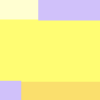
Issue 06
Listening with Artists
“There is nothing new under the sun, but there are new suns.” –Octavia Butler
“There is nothing new under the sun, but there are new suns.” –Octavia Butler

3–4 minute experience, or the time it takes to steep a cup of tea.
Thank you for taking part in the poll!
—
LETTER FROM THE EDITORS

At its best, teaching is a humanistic project that has the power to help us build strong communities. However, mainstream systems of education not only discourage the joyful exploration that comes naturally to learners, but uphold the status quo, reproducing inequities.
For this issue, we wanted to explore teaching and educational practices, to probe at what’s necessary in an education, how to meet the needs of students of all backgrounds, and what skills are crucial to cultivate.
In the beginning, we wondered how artmaking itself, as a unique mode of inquiry, could be a useful model for pedagogy. In retrospect, we discovered that wasn’t quite the correct framing. In listening to the generous perspectives of our contributors, we leaned into being students and shifted our ideas: accepting imperfection and focusing on the process of inquiry over the outcome.
For that reason, we felt it was fitting for this issue to unfold through a series of exploratory conversations. We sought out artists who place emphasis on the intellectual work and artistry of teaching itself and who have made it a mission to subvert the current system.
The conversations that make up the issue reveal how expansive the topic of education can be, from creating intentional spaces where the work of education can take place to following where a mistake can lead, sitting with ugly realities, and teaching people to think in ways that will help us build a better world.
We also came to understand how much of learning begins with building archives, even if the processes and histories being documented are messy or unfinished and the archive itself is untraditional. We were thrilled to continue this practice by documenting these nine brilliant artists, makers, and community builders in conversation. Through them we witnessed the kernels of new ideas spark into being, offering starting points for a different kind of education that centers justice, wonder, and possibility.
With that spirit in mind, we have collected discussion questions based on the interviews, which you can find below. We hope you will continue to explore with us!
In process,
Kate Blair and Jessica Ferrer
Editors
A note on the art direction in this issue:
New viewing structures emerge when two images in a neighboring layout environment exist beside each other. Art historian Felix Thürlemann has analyzed such image complexes throughout the course of art history, and refers to these types of image encounters as a “hyperimage.” By way of the viewer’s comparing activity, a base for new understanding emerges. “An apple still life is perceived differently next to another apple still life than next to a still life of lemons or quince.”¹ The two sets of different videos in the editorial section feature a common lexicon for the presented content, yet the constellation of these video pairings invites the viewer to actively learn, to “read” between, and to contemplate a newfound space for themselves through these meanings. Are ways of learning ways of new perceiving?
1) Thürlemann, Felix. “More Than One Picture: An Art History of the Hyperimage.” The Getty Institute: Los Angeles, 2019, p. 14.
[ID: A diptych composed of two looped videos laid side by side. On the left, a hand holds a green leaf with some decomposition at its center, moving the leaf slowly so that it catches dappled light and shadow. On the right, a spiny yellow caterpillar wanders along a rusted railing overlooking a grate in the street.]
